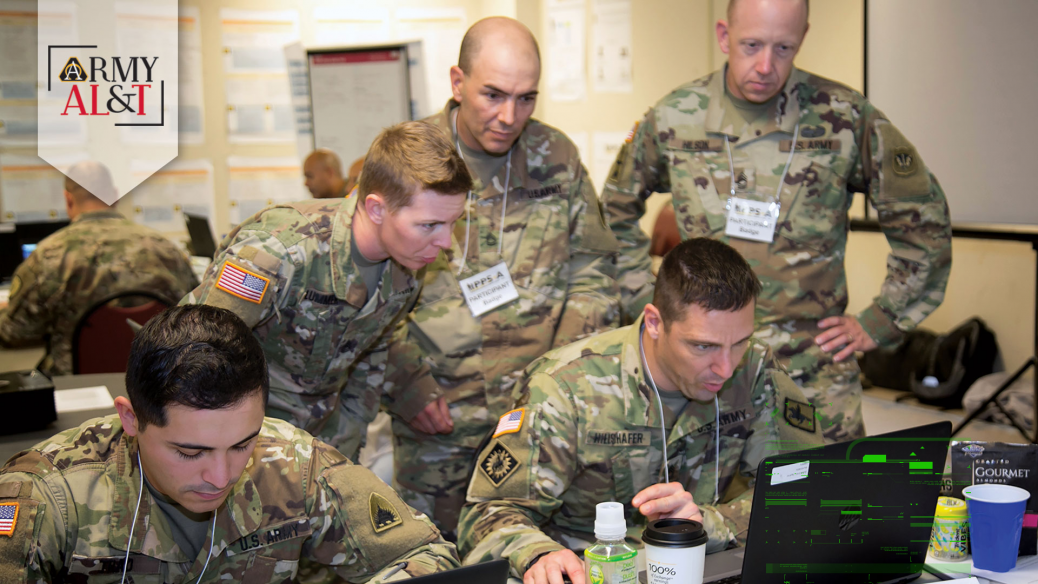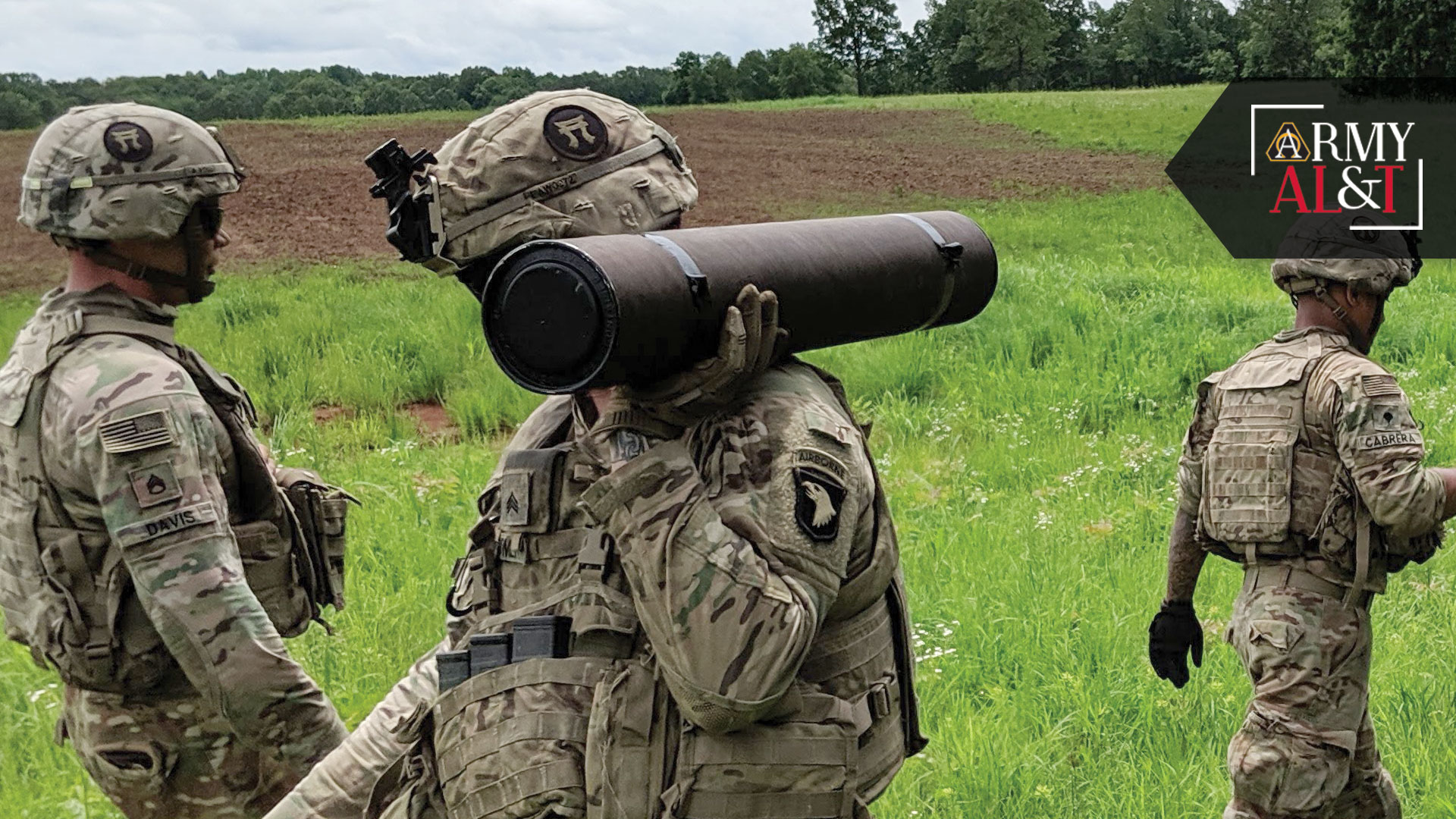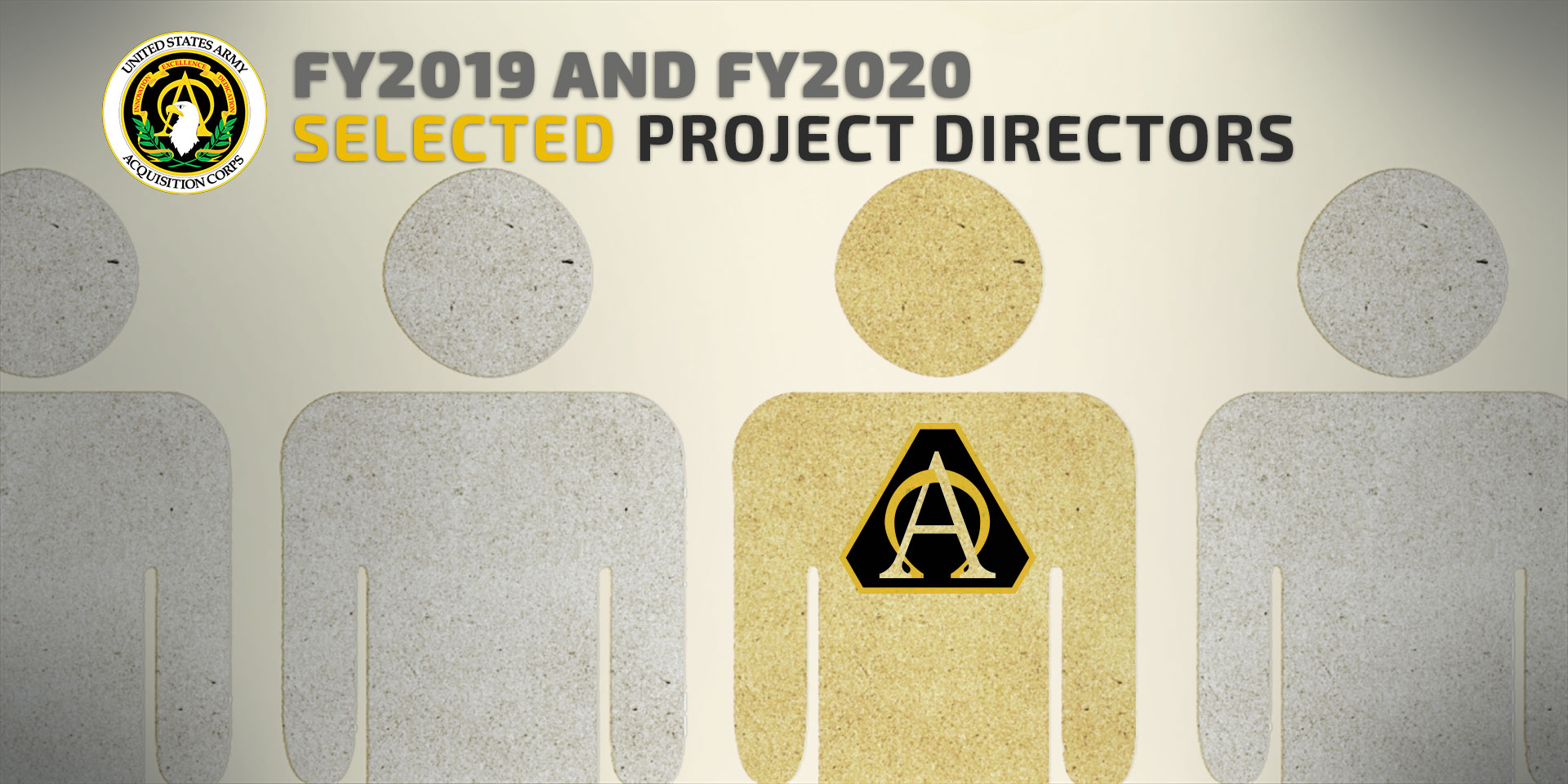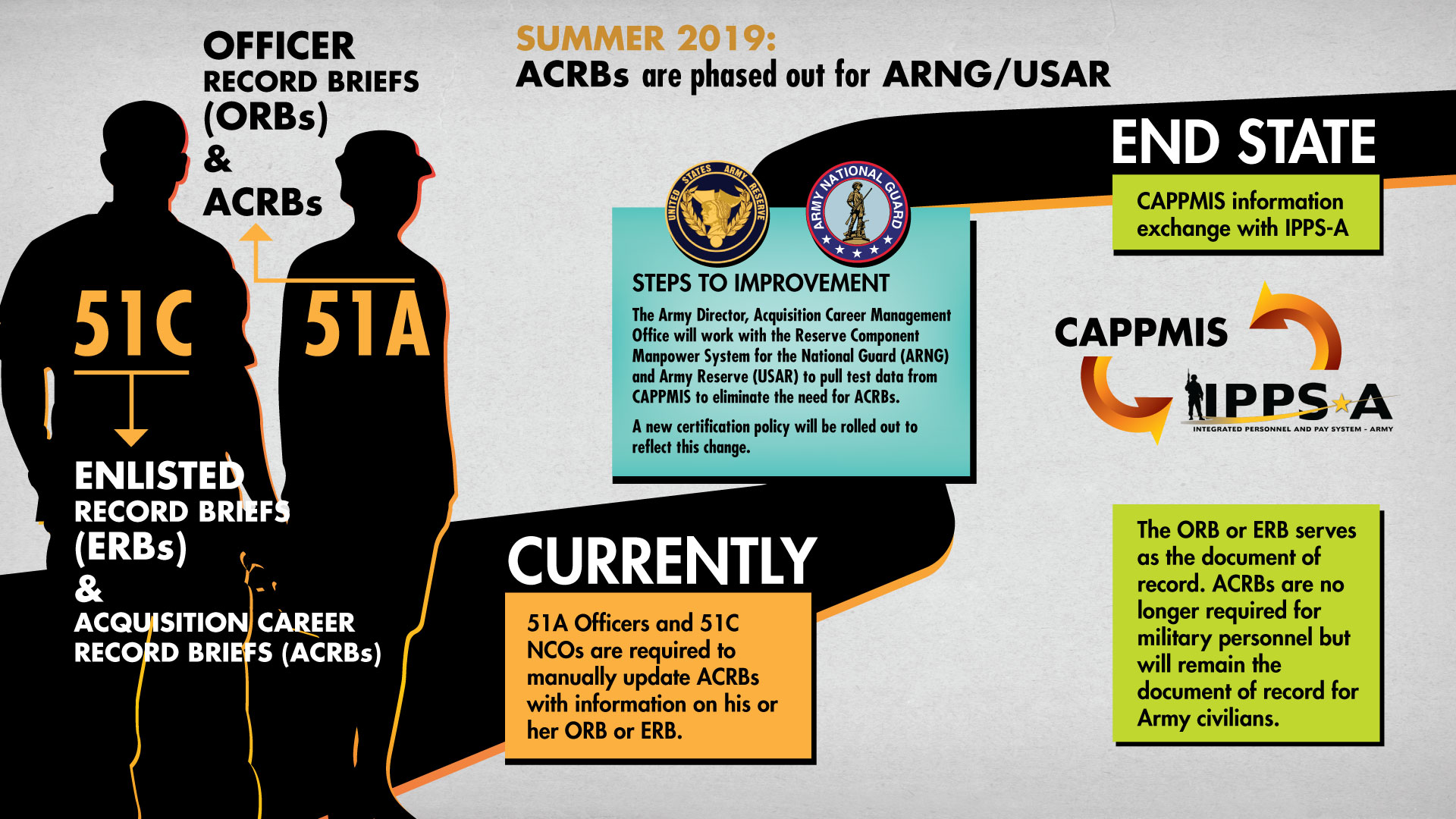How the Army fielded its next-generation human resources system to the Pennsylvania Army National Guard.
by Col. Greg Johnson
“No plan survives contact with the enemy.” This piece of battlefield wisdom has been passed down over the years after being introduced in 1880 by Prussian military strategist Helmuth von Moltke. I witnessed the truth of this axiom on several occasions while deployed to Iraq and Afghanistan, and also as the functional lead overseeing the development of the Army’s next-generation human resources and talent management system. Not only did I observe how the best-laid plans were disrupted by changing realities, but I also experienced firsthand the power of aggressive, agile teams to overcome our challenges and deliver capabilities that will revolutionize the human resources business throughout the Army.
FORGING THE FUTURE
The Integrated Personnel and Pay System – Army (IPPS-A) integrates all 1 million Soldiers into a single system for the first time. IPPS-A provides increased visibility, talent management capabilities and auditability to all three Army components (active duty, Reserve and National Guard). The system delivers enhanced transparency and access to Soldier records and personnel actions like never before. It provides timesaving, self-service tools to total force Soldiers, commanders and human resources professionals, and enables mobile capabilities.
IPPS-A grew out of earlier DOD attempts to modernize the military’s human resources enterprise. The Army, realizing its unique personnel and talent management requirements, set out to standardize and reduce more than 200 human resources and pay systems that were being used across the Army National Guard, Reserve and active components to process routine transactions. As mandated by the Army’s Total Force Policy, IPPS-A standardizes business practices, provides authoritative data for military personnel, and facilitates a continuum of services across all three components.
Since its inception, IPPS-A has made significant progress toward building a system that will usher in a new era of human resources and talent management in the Army. Stakeholder engagement is critical to this effort. In the last two years alone, we have executed more than 400 engagements with stakeholders throughout the total force Army, as well as with key influencers throughout DOD and Congress. These engagements included technical reviews of the system, software demonstrations, deployment briefs, functionality working groups and other events. We captured and applied feedback from stakeholders who will use IPPS-A as part of their day-to-day activities, leveraging the unique insights of total force Soldiers and Army civilians at all levels.
THE DRIVE TO BUILD RELEASE 2
IPPS-A is currently on course to be deployed throughout the Army National Guard. In January 2019, the Army fielded IPPS-A to the Pennsylvania National Guard and conducted a limited user test of the system. Pennsylvania National Guard Soldiers integrated IPPS-A into their daily human resources operations and put the system through its paces. The test was successful. Now, we are preparing the next states—including Virginia, Maryland and the District of Columbia—to receive the system. We expect full deployment of IPPS-A throughout the Army National Guard by early 2020.
At every step of this process, we partnered with the Army National Guard to help it become the first component to field the system. We cultivated relationships with each of the 54 state and territory Army National Guard entities as well as National Guard Bureau stakeholders to hear their feedback and inform the build process for Release 2 of IPPS-A. Starting in August 2018, we worked alongside our Pennsylvania National Guard counterparts to execute three critical events that ultimately would pave the way for IPPS-A’s fielding in the commonwealth.
Throughout these events—the risk reduction event, the system-acceptance test and the limited user test—we leveraged the Pennsylvania Army National Guard’s extensive expertise to improve the system and meet the needs of the customer. The Pennsylvania Army National Guard influenced the functionality of the system—everything from how a Soldier submits a personnel action request to human resources analytics, like the human resources authorization report used by commanders. We also worked closely with the National Guard to ensure that the interfaces with existing authoritative data sources, like the Army Organizational Server – Data Interface and the Reserve Component Manpower System – Guard, accurately and correctly fed data into IPPS-A. Data correctness is an incremental step toward larger efforts of talent management and total force visibility. It affects how decisions are made, and the consequences of those decisions have a downstream effect on the Soldiers we support. Pay will be linked to human resources transactions in IPPS-A, so data must be correct.
ADAPTING TO THE ENEMY
By summer 2018, IPPS-A was on track for deployment to the Pennsylvania Army National Guard by the end of the year. This effort began with the risk reduction event to test end-to-end business processes of IPPS-A and ensure that the system could subsume the functionality of the Standard Installation and Division Personnel Reporting System, the primary human resources database used by the Army National Guard. The event enabled us to ensure that the outputs were accurate and consistent with National Guard requirements, and provided a precheck to normal testing procedures. The risk reduction event was followed by the systems acceptance test, a critical milestone that would provide a more comprehensive test of the system’s ability to accomplish business processes.
As we proceeded through the development process, we learned how to optimize communication between IPPS-A’s internal teams (including developers) and external stakeholders and to work together as one cross-functional, agile team. I believe this was the secret to our success. Our team realized that by nesting with our Army National Guard counterparts and the system integrator developers, we could shorten the decision cycle to improve the system and perform critical fixes to make it work more efficiently. This enhanced our collective ability to address key data and coding issues, with strong results that would ensure that IPPS-A would be delivered on time and built right to meet the needs of the Army National Guard.
By the time we reached the systems acceptance test, we had established four collaborative teams tasked with streamlining approval to field and creating a more agile environment that would address issues in real time. Each team played a critical role in getting us through the system-acceptance test (SAT). Their functions were as follows:
- The SAT Lab: This team enabled participants to work through structured user scenarios. Through the SAT Lab, the IPPS-A team received direct feedback from participants on what was working, what wasn’t, and what needed to be fixed. Participants looked at IPPS-A from an end-to-end perspective and asked a critical question: “Can the system pass these scenarios?”
- The Dual Entry Cell: The Pennsylvania National Guard led this important team tasked with reworking the activities conducted during the risk reduction event. The Dual Entry Cell facilitated more robust testing of IPPS-A’s business processes to identity key issues.
- The Policy, Processes and Procedures (P3) Cell: Led by the National Guard Bureau, participants of the P3 Cell looked at what came out of the SAT Lab and the Dual Entry Cell and asked, “What National Guard policy or procedure do we have to change based on this new system?” For any defect that came in, members of the P3 Cell worked side by side with IPPS-A program personnel to determine why it was a defect and strategize how it could be fixed.
- The Tactical Operations Center: This team managed all of the activities from the SAT Lab, the Dual Entry Cell and the P3 Cell, and facilitated coordination among units.
As a result of our agile structure, these four cells enabled us to swiftly address issues and strategize solutions with the help of our Army National Guard counterparts. We brought in developers to work hand in hand with data owners and end users to fix defects and improve the system. This was a first: Never in the history of the Army had we deployed new equipment while simultaneously improving it based on stakeholder feedback.
CONCLUSION
The Pennsylvania and Virginia Army National Guards are the first states to integrate IPPS-A into their daily human resources operations, and we’ve received feedback that the system is making a difference. IPPS-A provides increased transparency and accessibility, enabling Soldiers to operate on-the-move and accomplish routine tasks that previously required an in-person trip to a G-1 or S-1 shop. Soldiers can now request updates to their records, monitor the status of their personnel actions and submit help inquiries from the palm of their hand. Self-service transactions are automated, paper-free and trackable from initiation to approval.
In addition, because of IPPS-A’s mobile capabilities, commanders and human resources professionals can review and approve transactions without being tied down to their desk or workstation. Commanders can now view analytics of their formation and view their Soldiers’ skills directly in the system, a level of access not present in the legacy environment. “With IPPS-A, I can track which Soldiers have which certifications,” said Capt. Isaac Rivera of the Virginia Army National Guard. “As the commander of a maintenance company, that makes me very excited.”
IPPS-A is transforming the Army’s human resources business, which will pay huge dividends for the total force in the years to come. By introducing modern, redesigned functionality and offering real-time availability and self-service capabilities, IPPS-A improves transparency for all Soldiers. The system streamlines processes across all three components into one way of doing business, and enables the Army to optimize Soldiers’ capabilities and maximize contributions to Army readiness, task organization and mission accomplishment. As one of the senior-most leaders of the Pennsylvania Army National Guard, Col. Laura McHugh, said during the limited user test, “IPPS-A has set the standard for how the Army should implement an Army system.”
Learning from Moltke, we made disciplined and prioritized choices during development that led to IPPS-A’s successful deployment to the Pennsylvania Army National Guard and enabled us to move forward in our journey to modernize human resources and talent management across the total force. We adapted to enemy contact and counteracted that by massing the right talent in Fort Indiantown Gap, Pennsylvania, for the risk reduction event, the system-acceptance test and the limited user test. By restructuring our teams and increasing communication with both internal and external stakeholders, we remain on track to bring IPPS-A to the rest of the Army National Guard and beyond.
For more information, go to www.ipps-a.army.mil.
COL. GREG JOHNSON is chief of the IPPS-A Functional Management Division within the Office of the Deputy Chief of Staff of the Army for Personnel. He holds a master’s degree from the U.S. Army War College, a Master of Policy Management from the Georgetown University Public Policy Institute and a Master of Education from the University of Oklahoma, as well as a B.A. in U.S. history from the University of San Francisco.

















